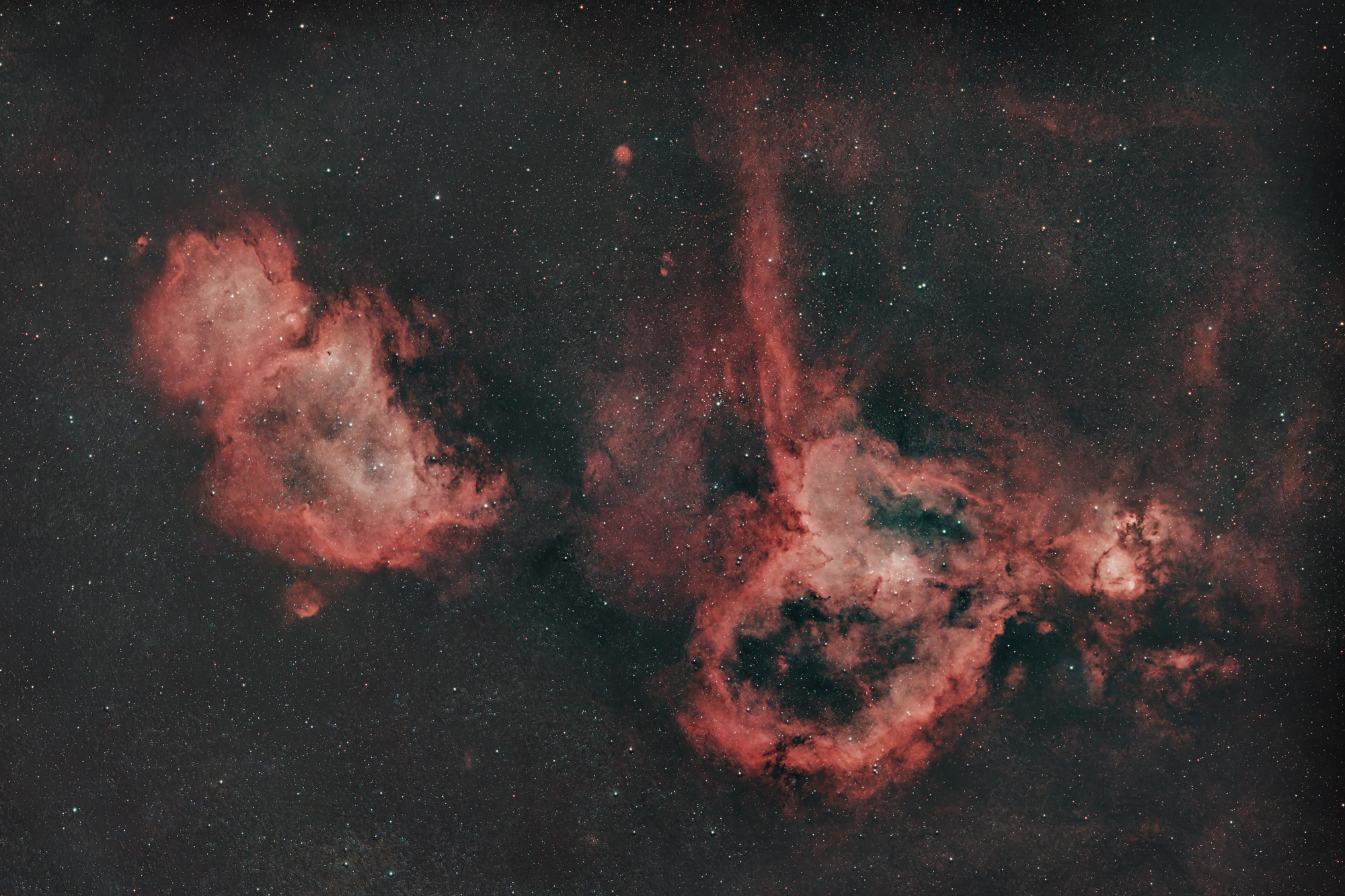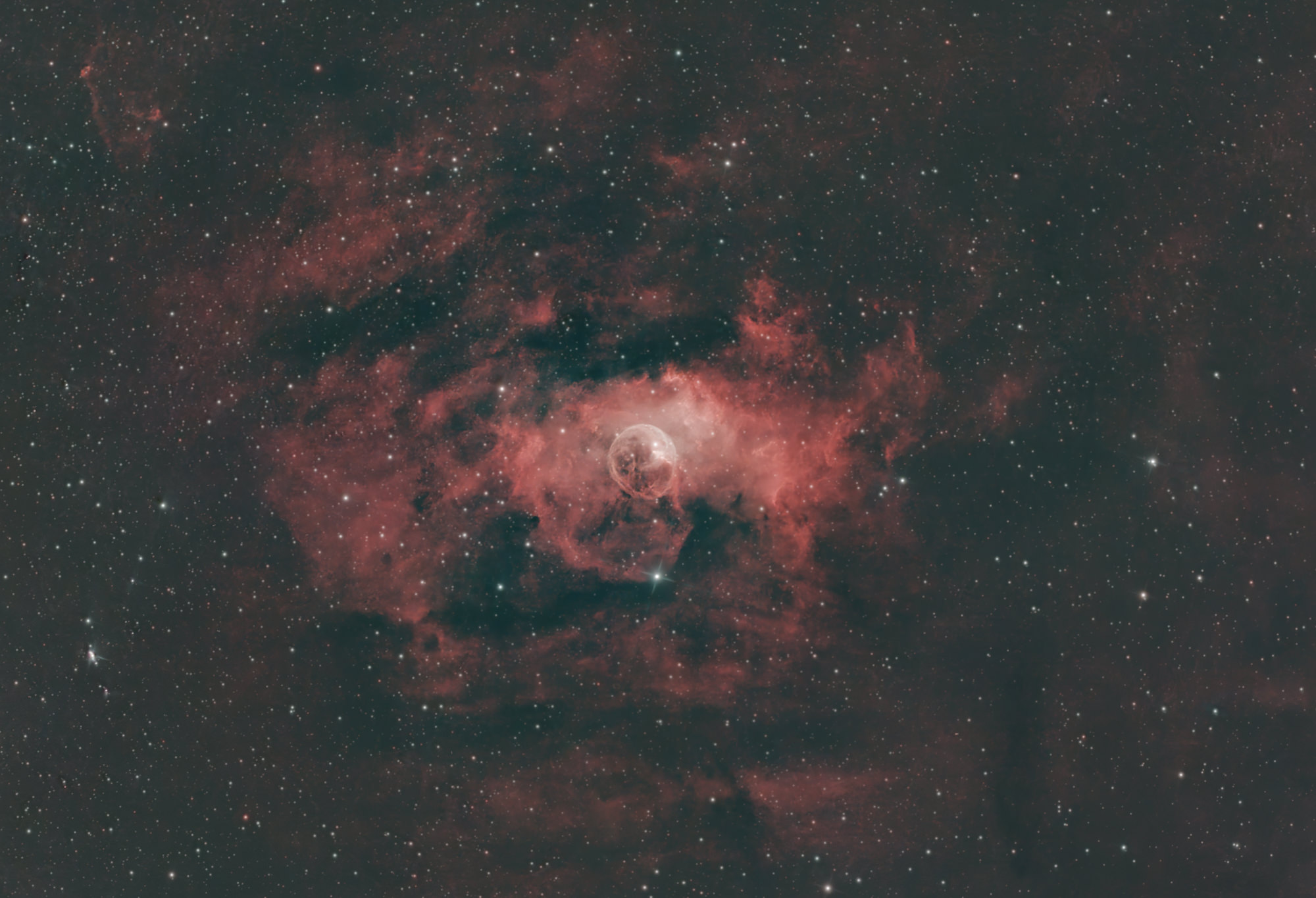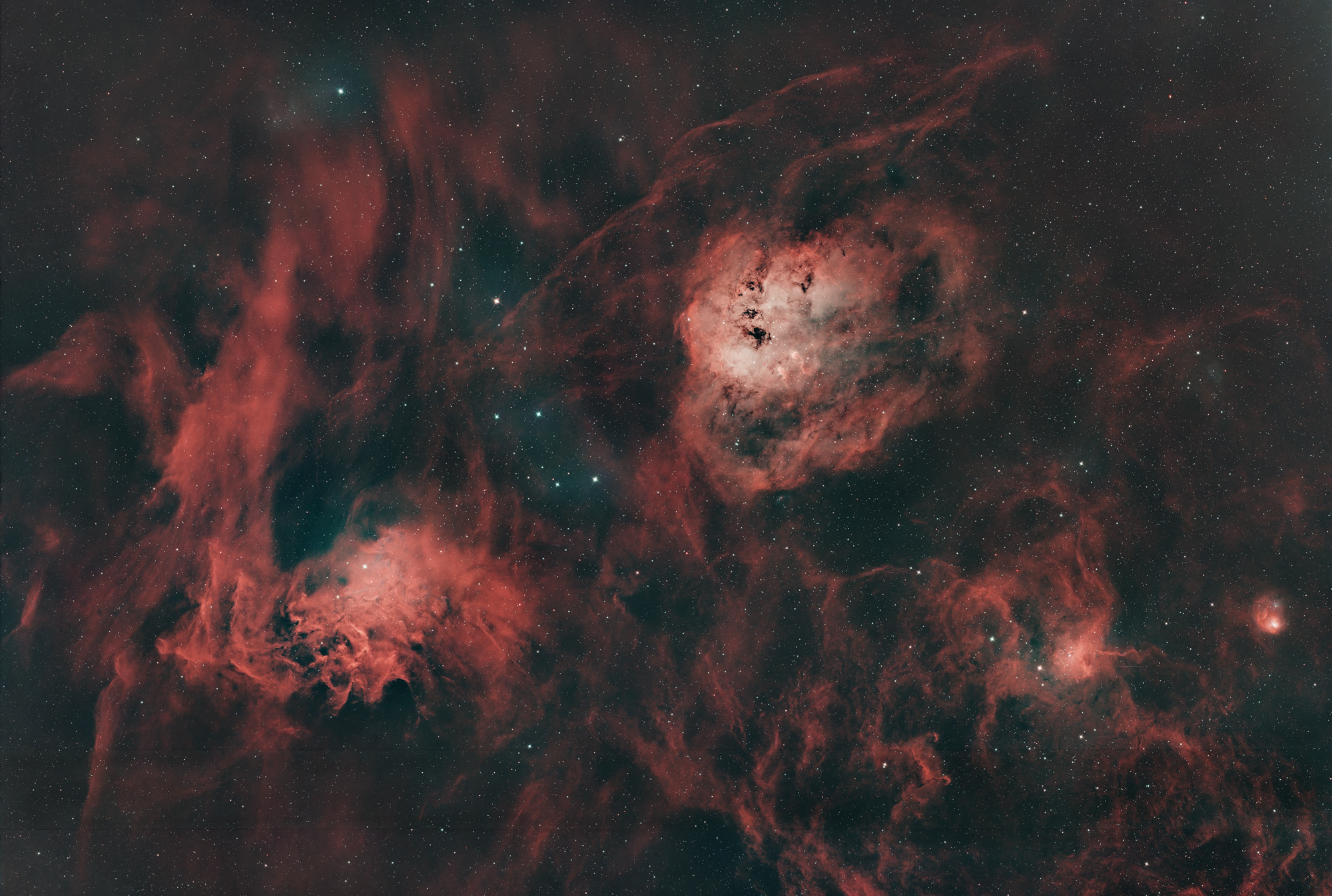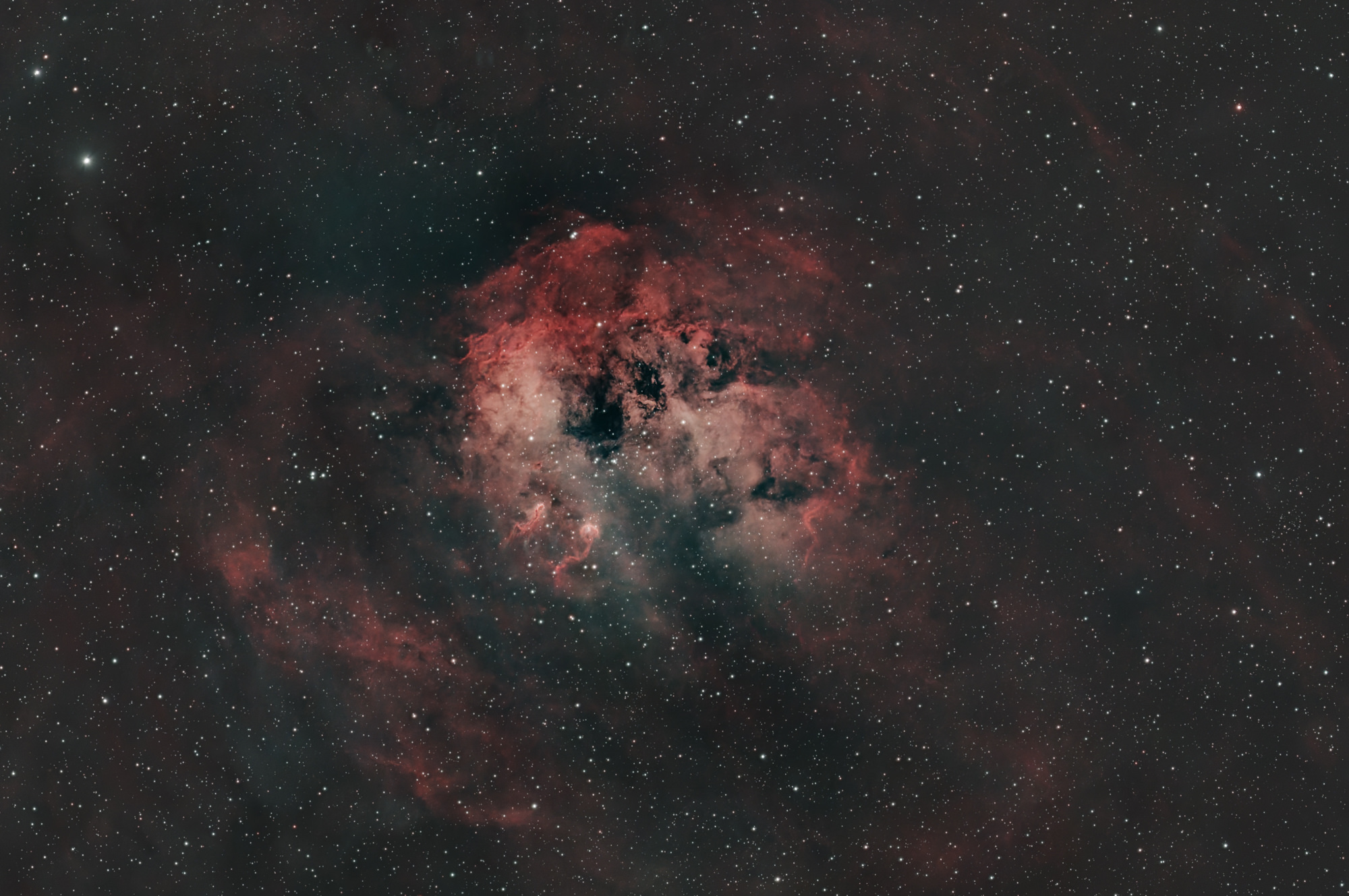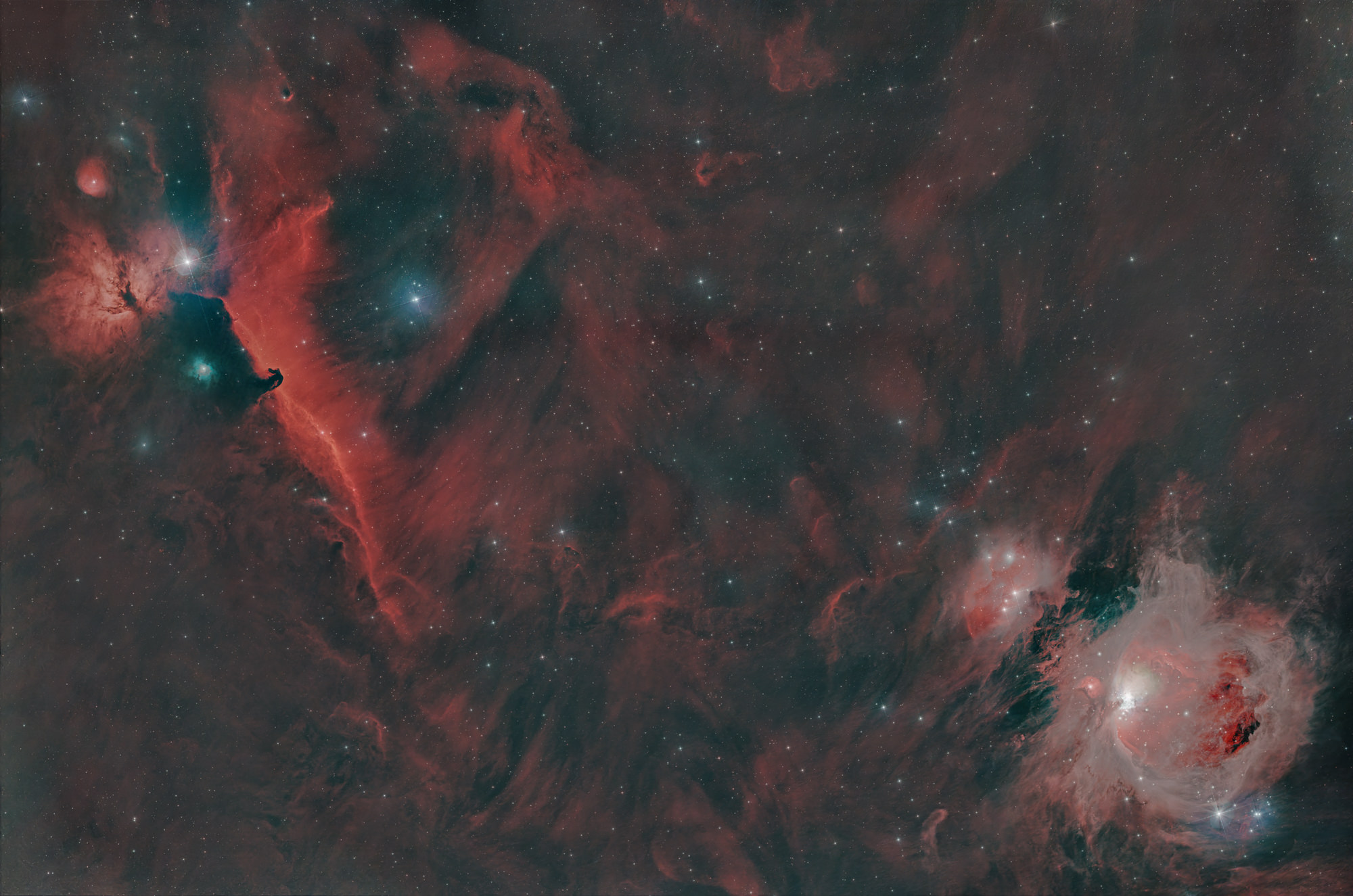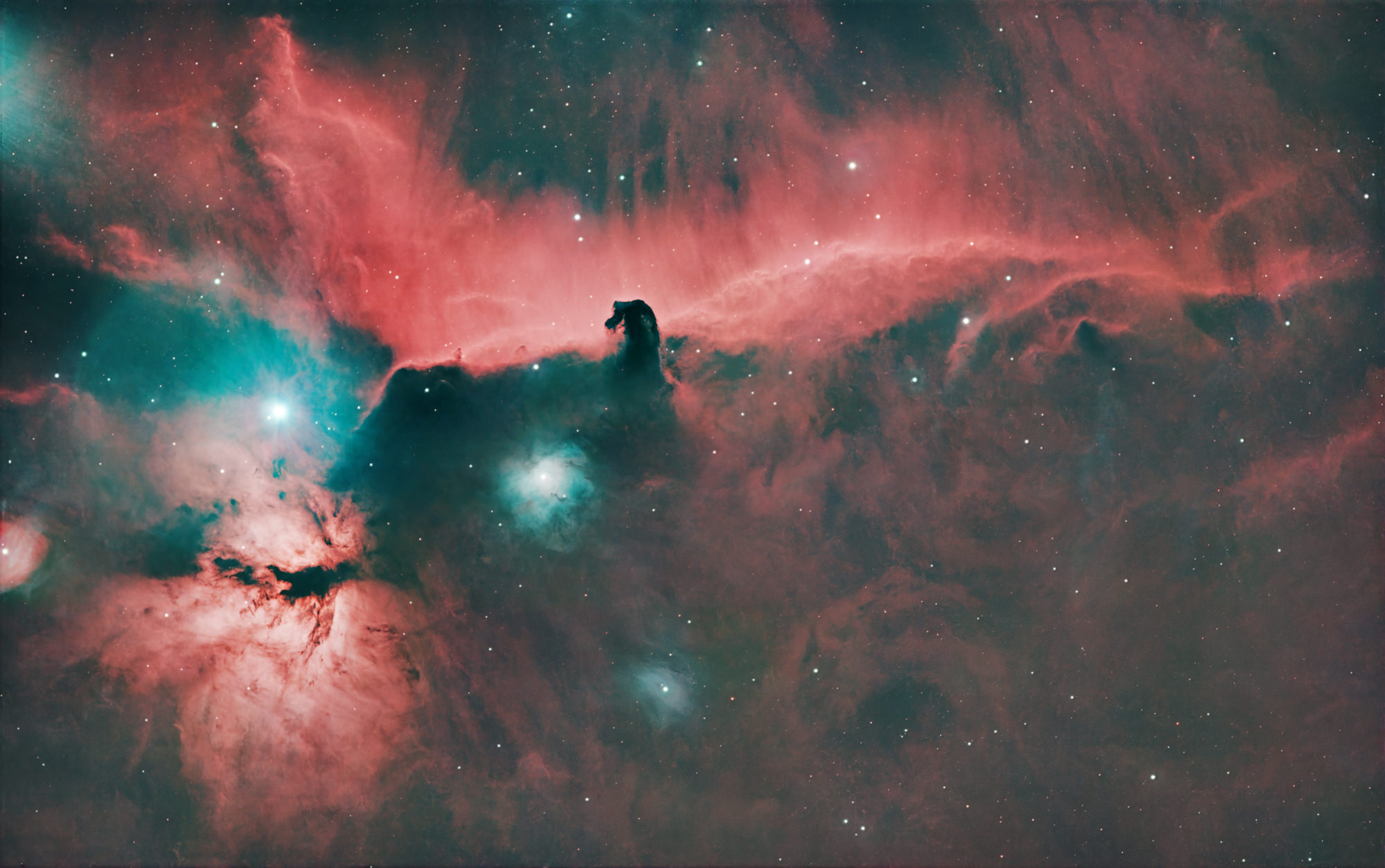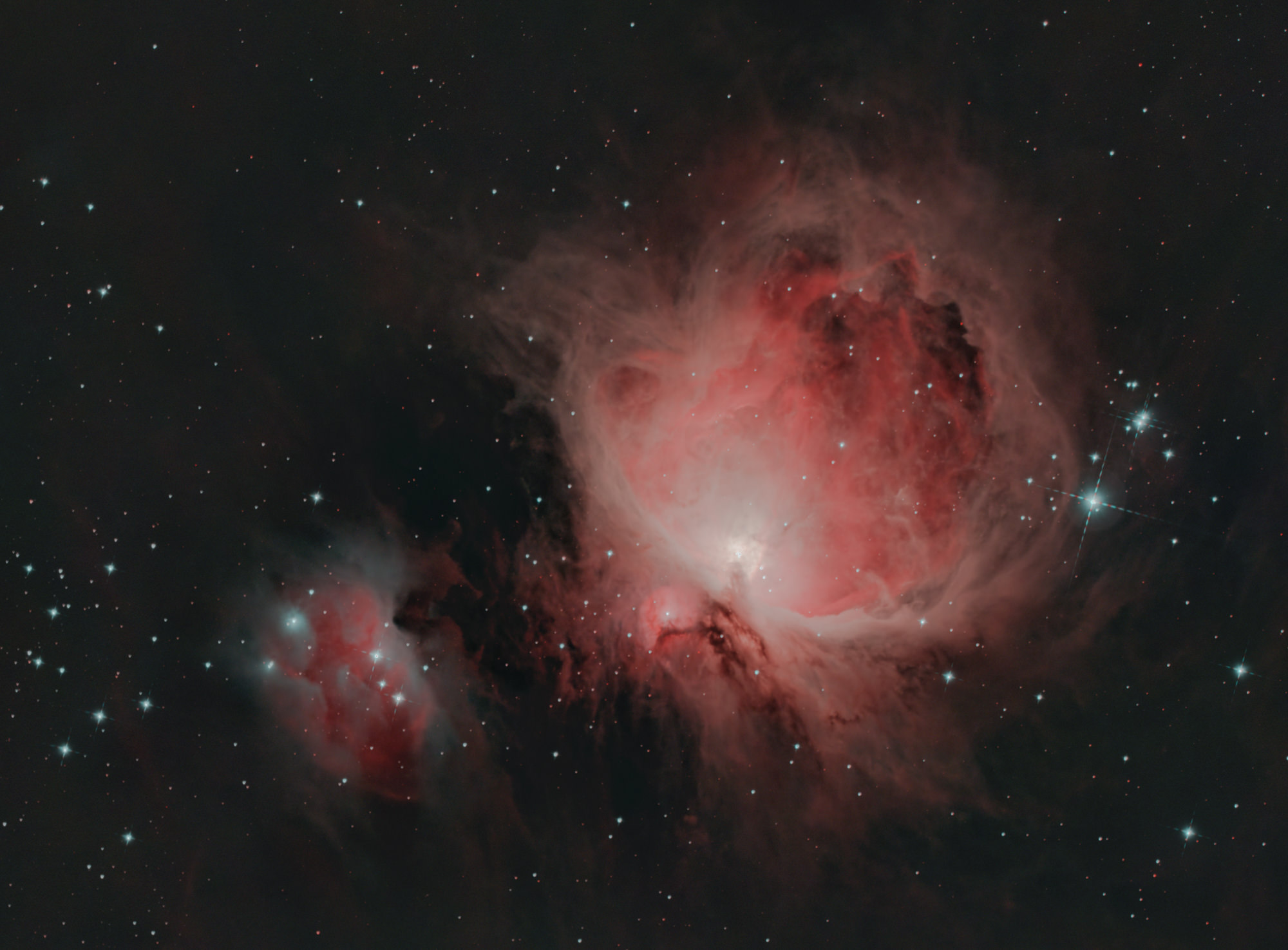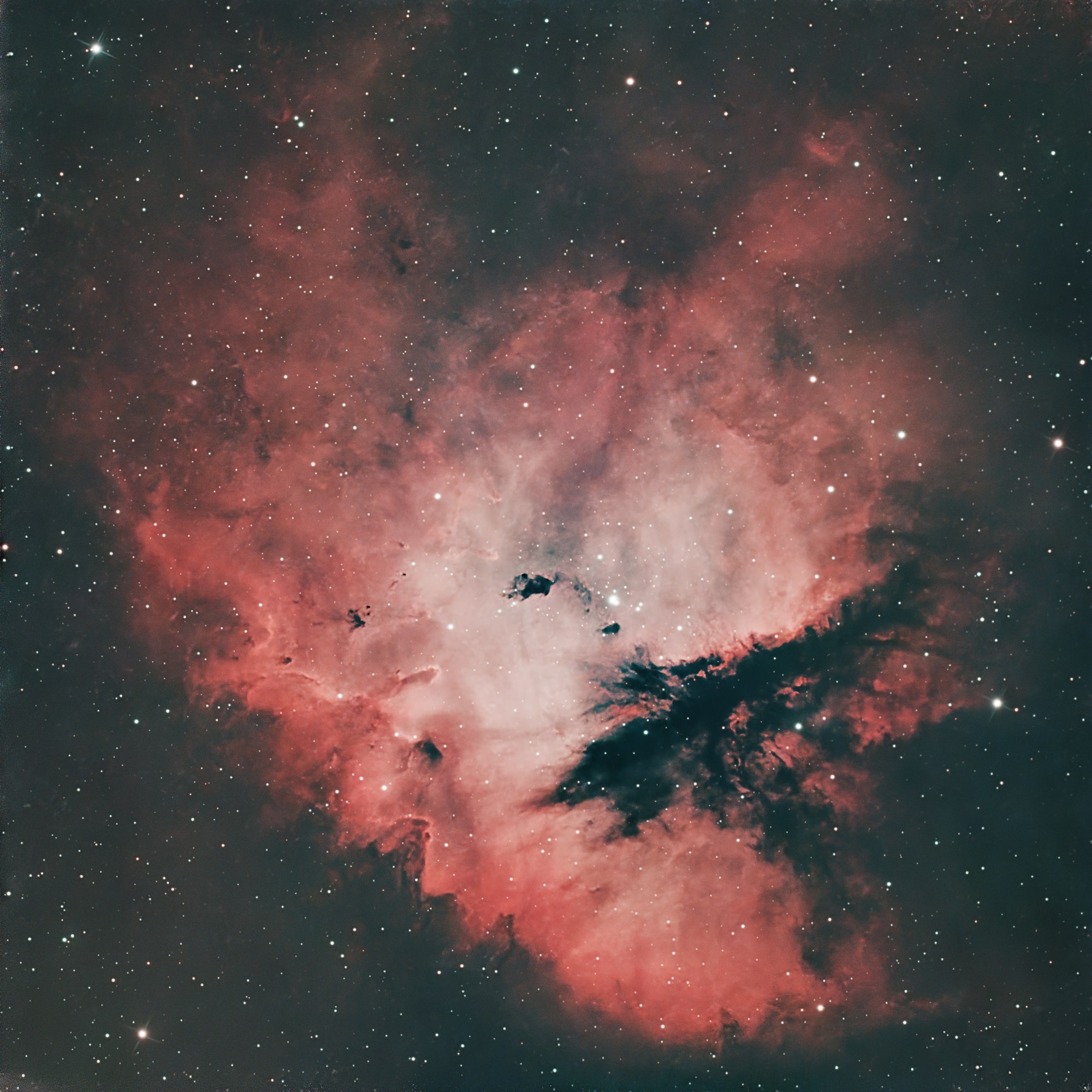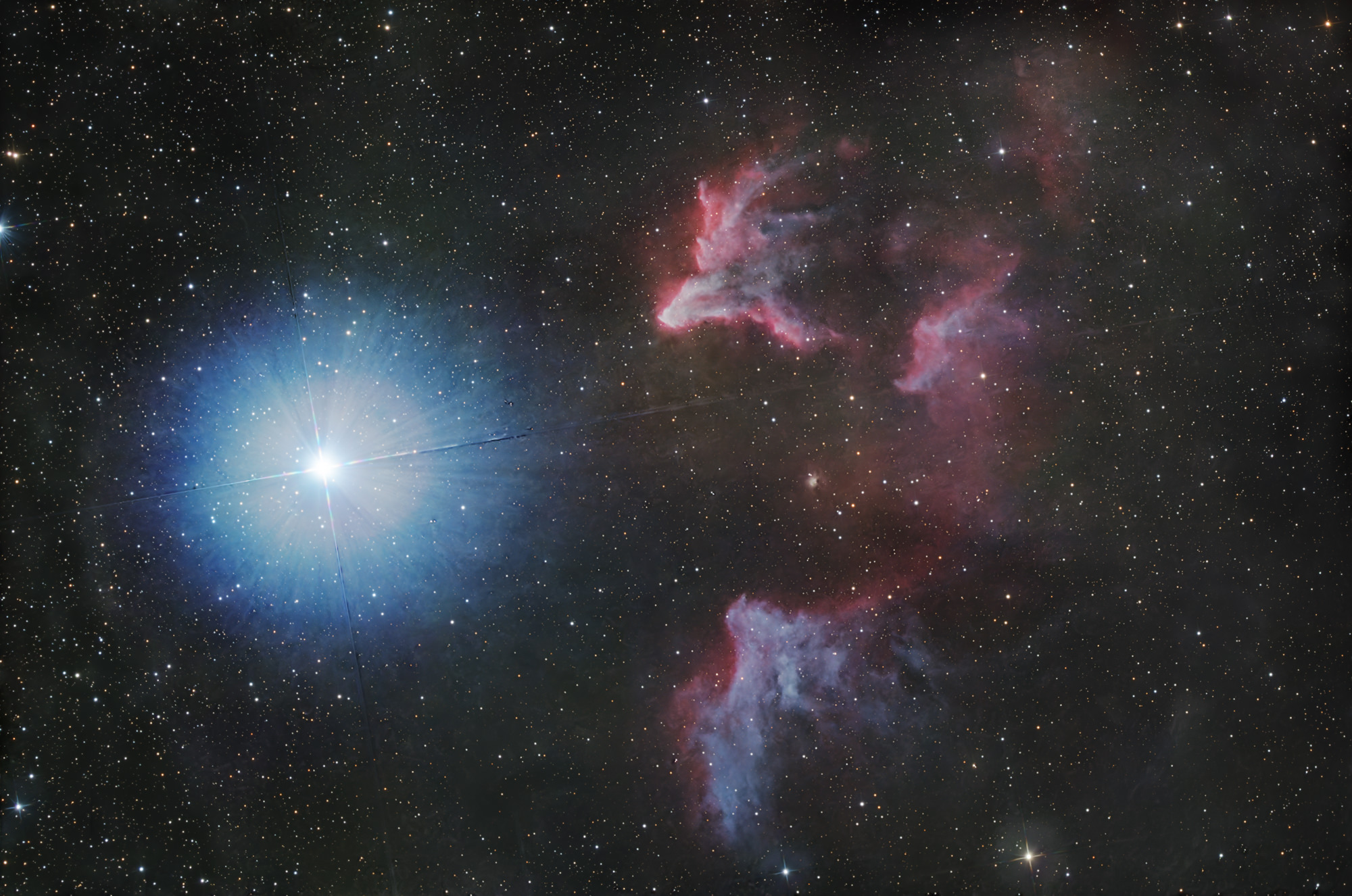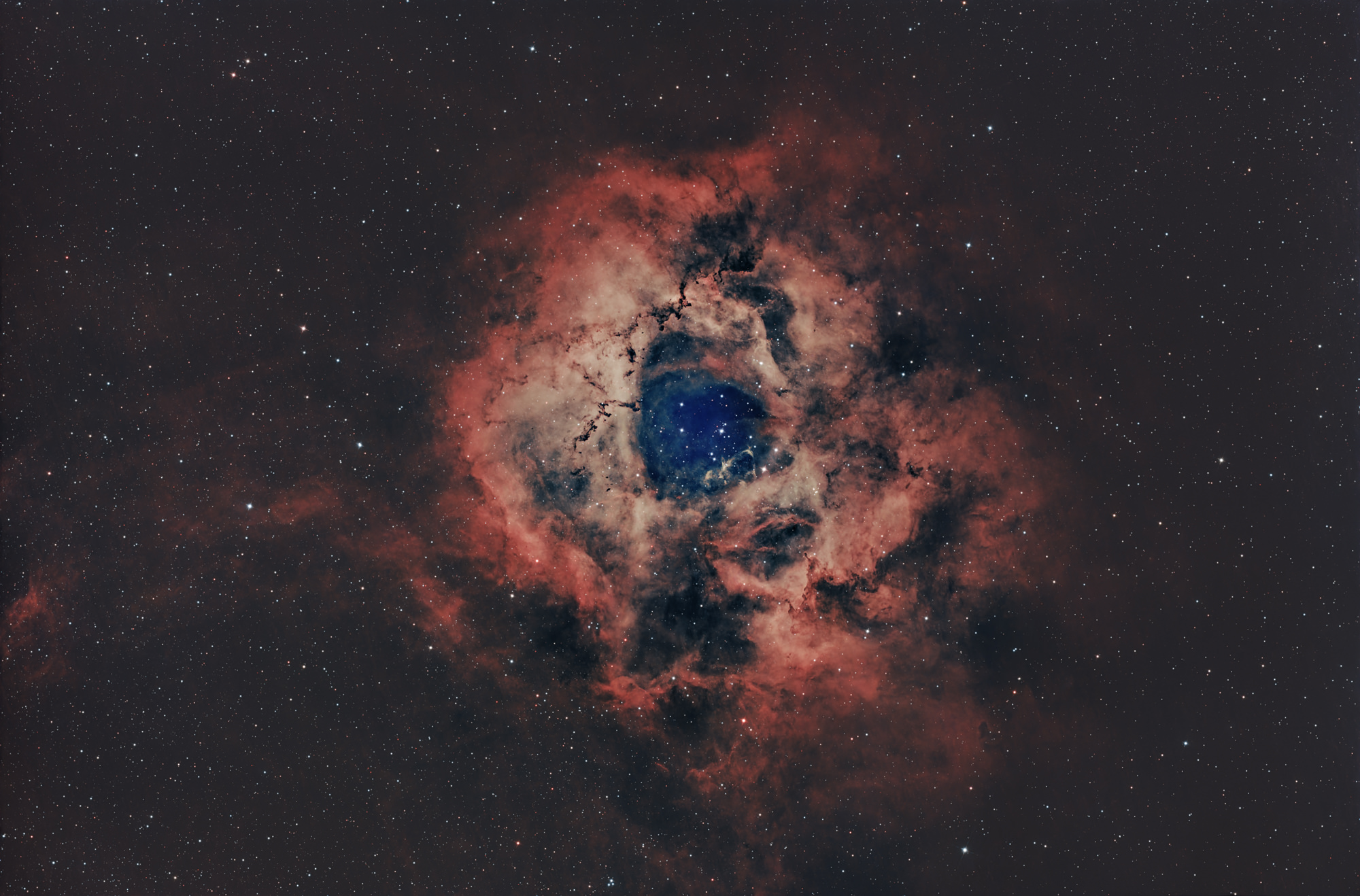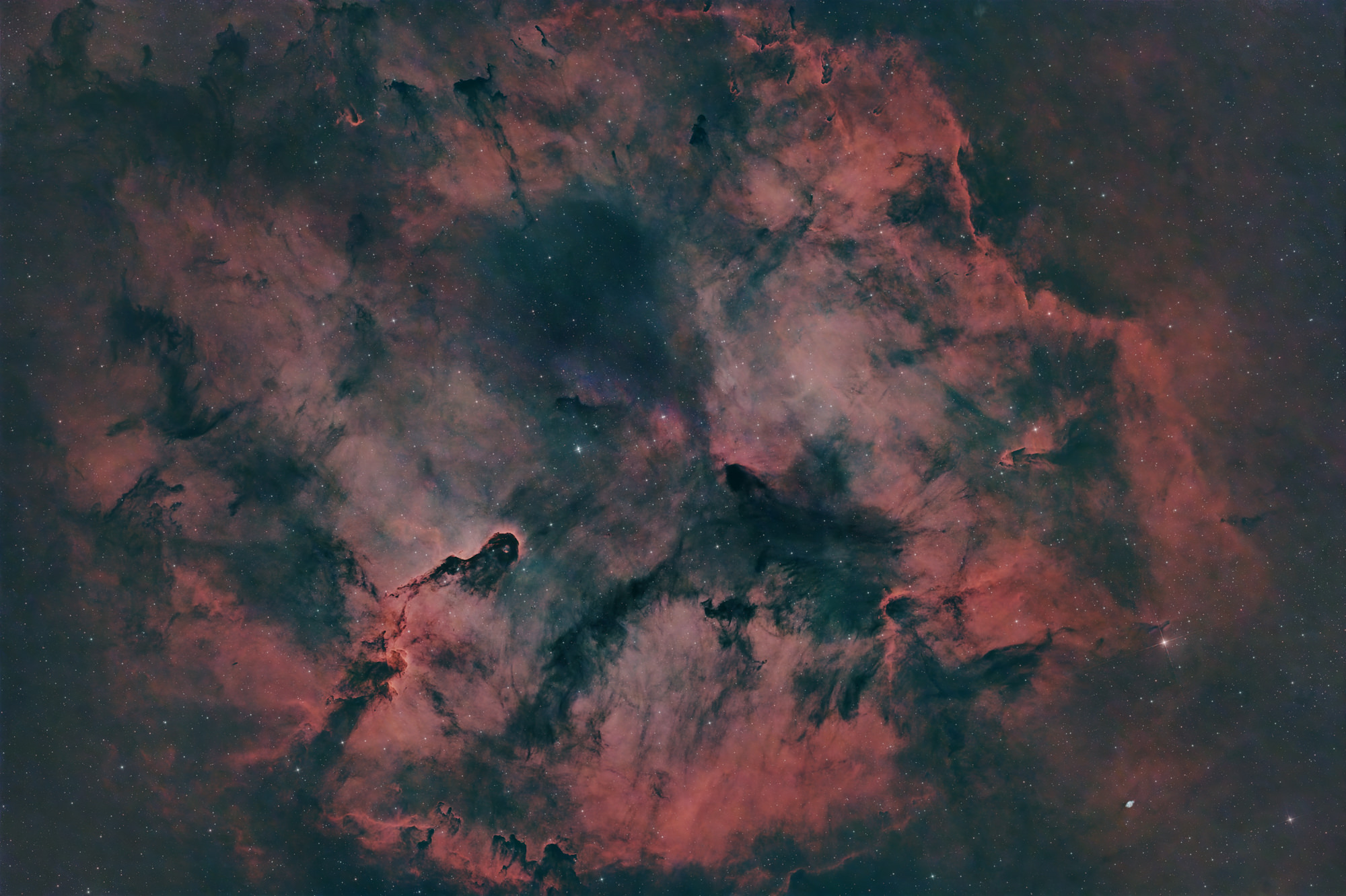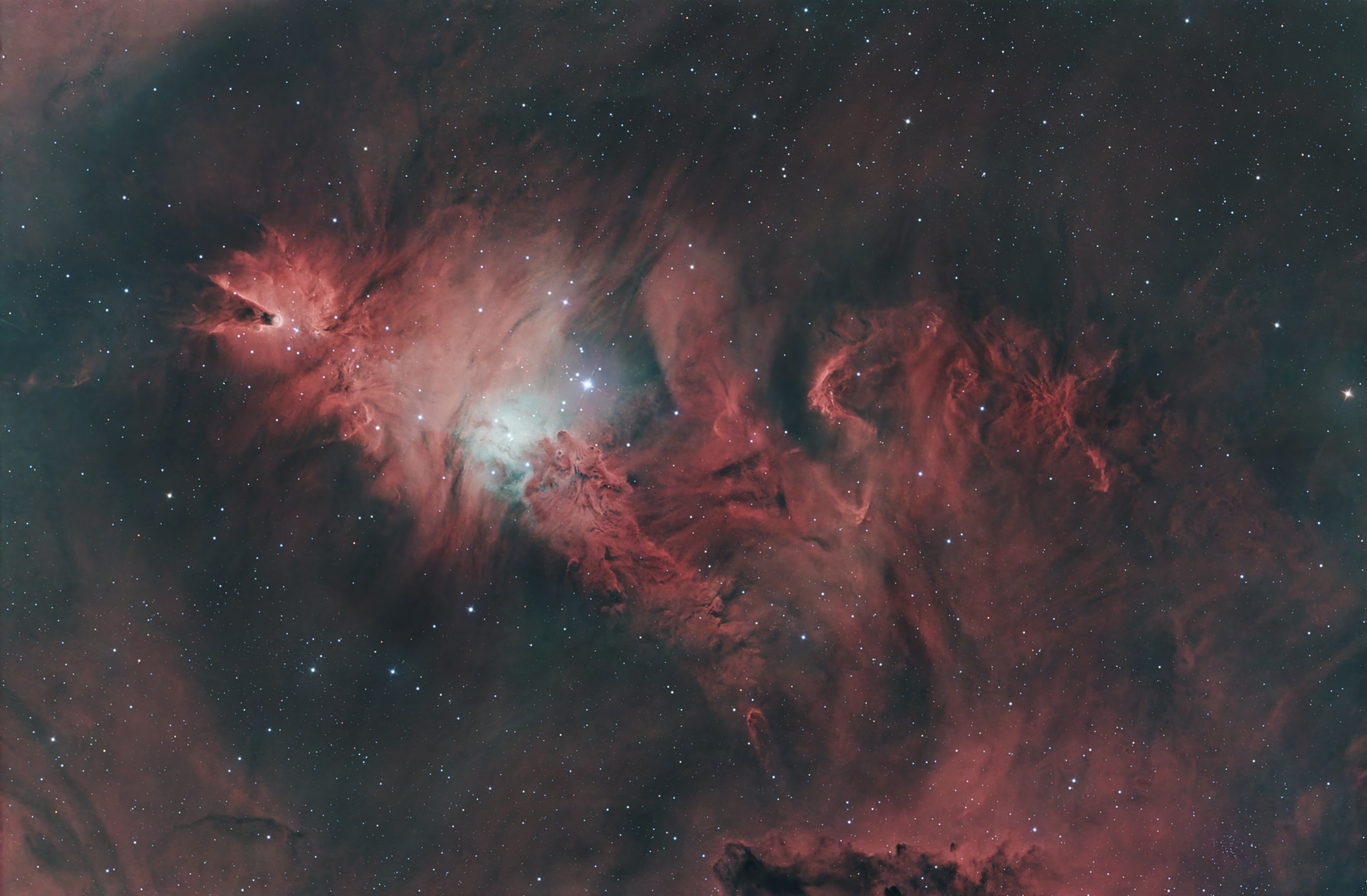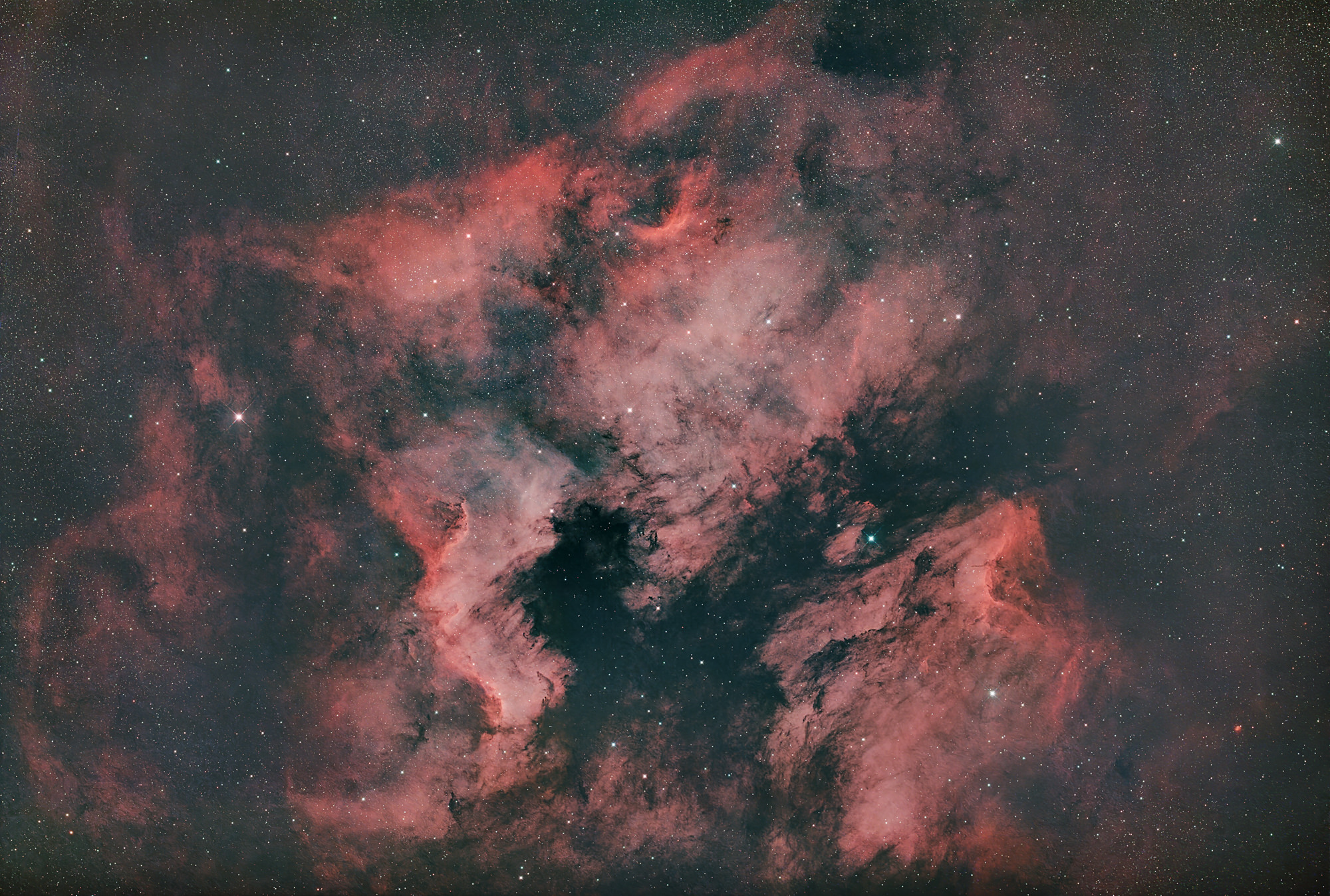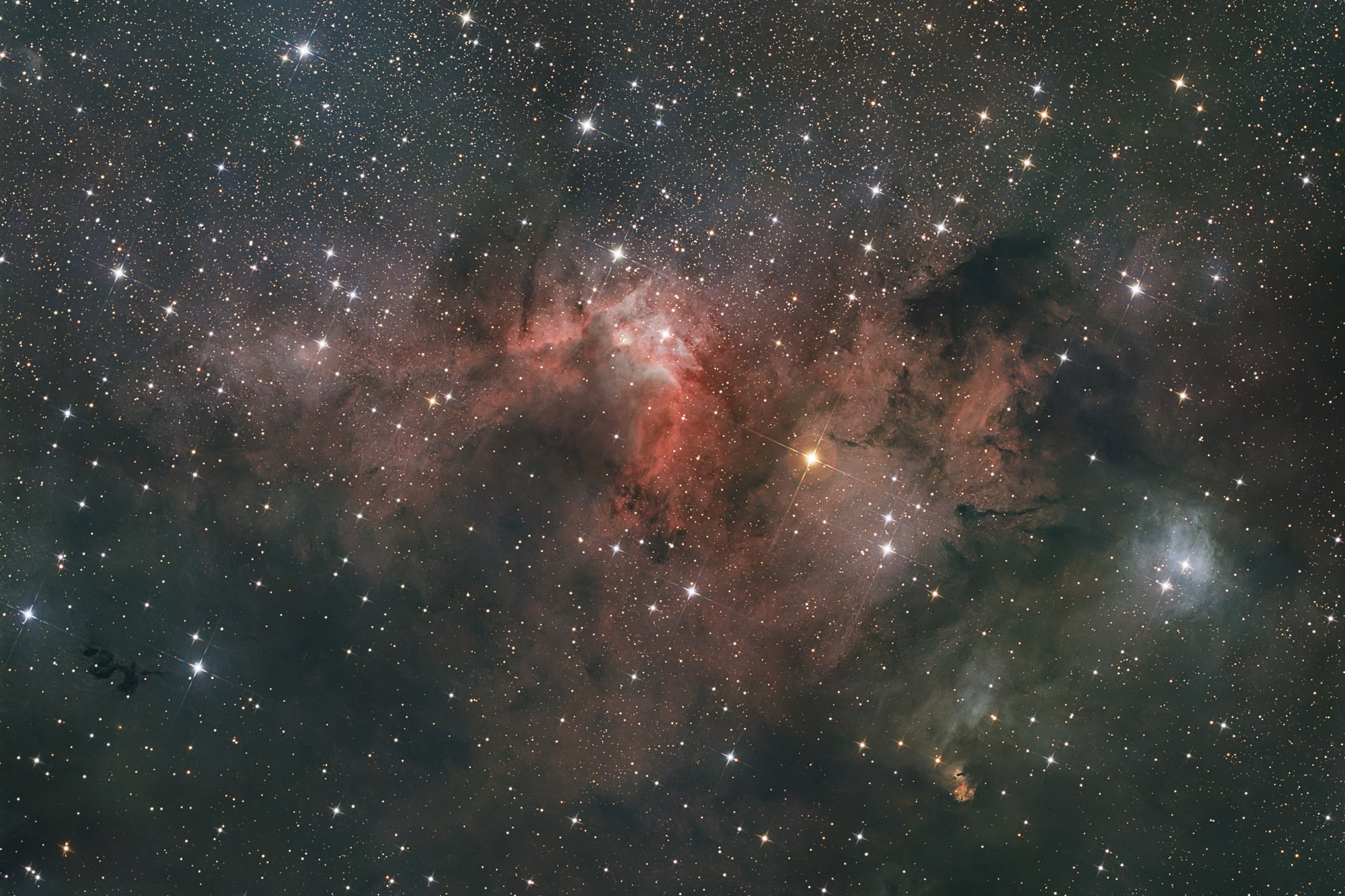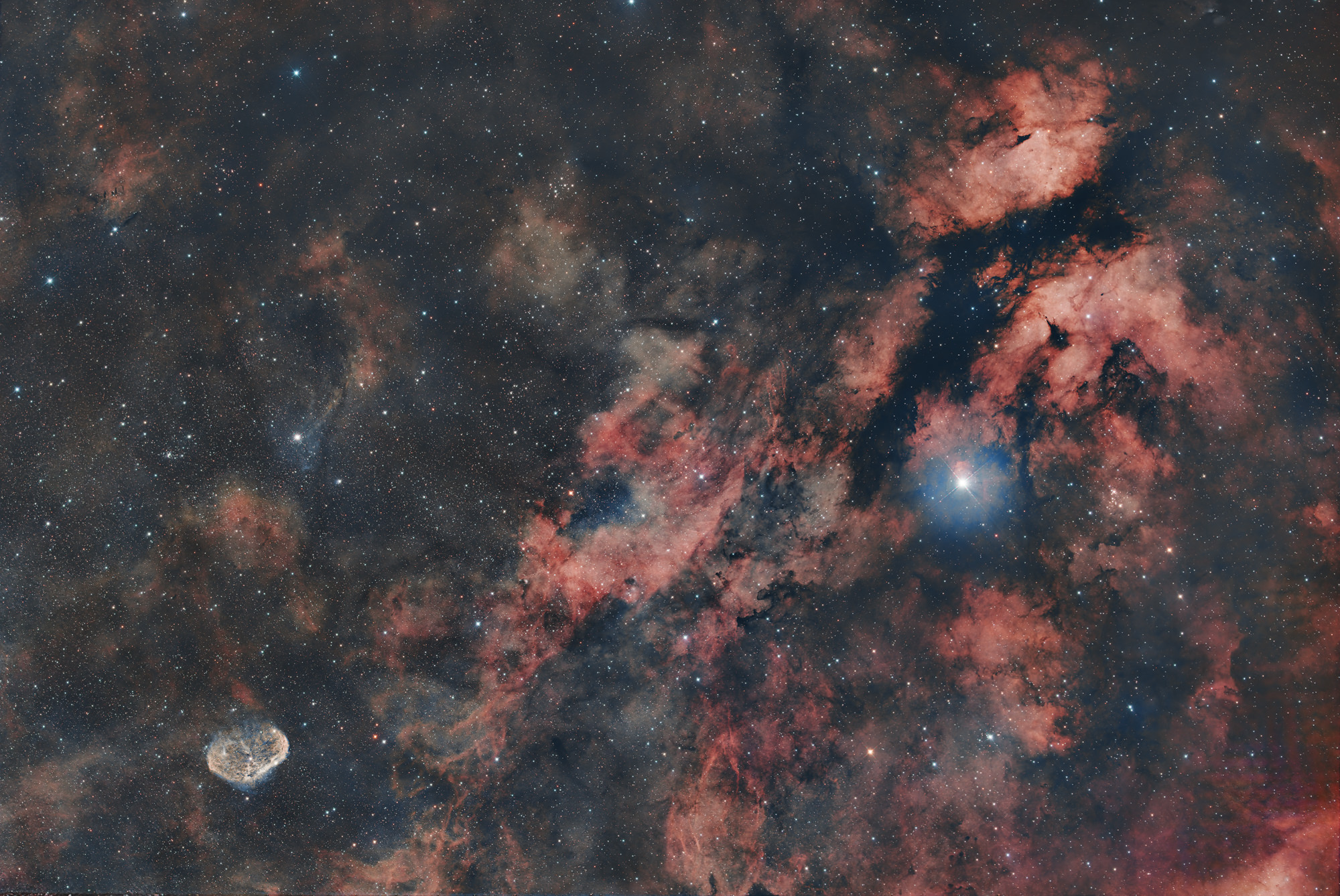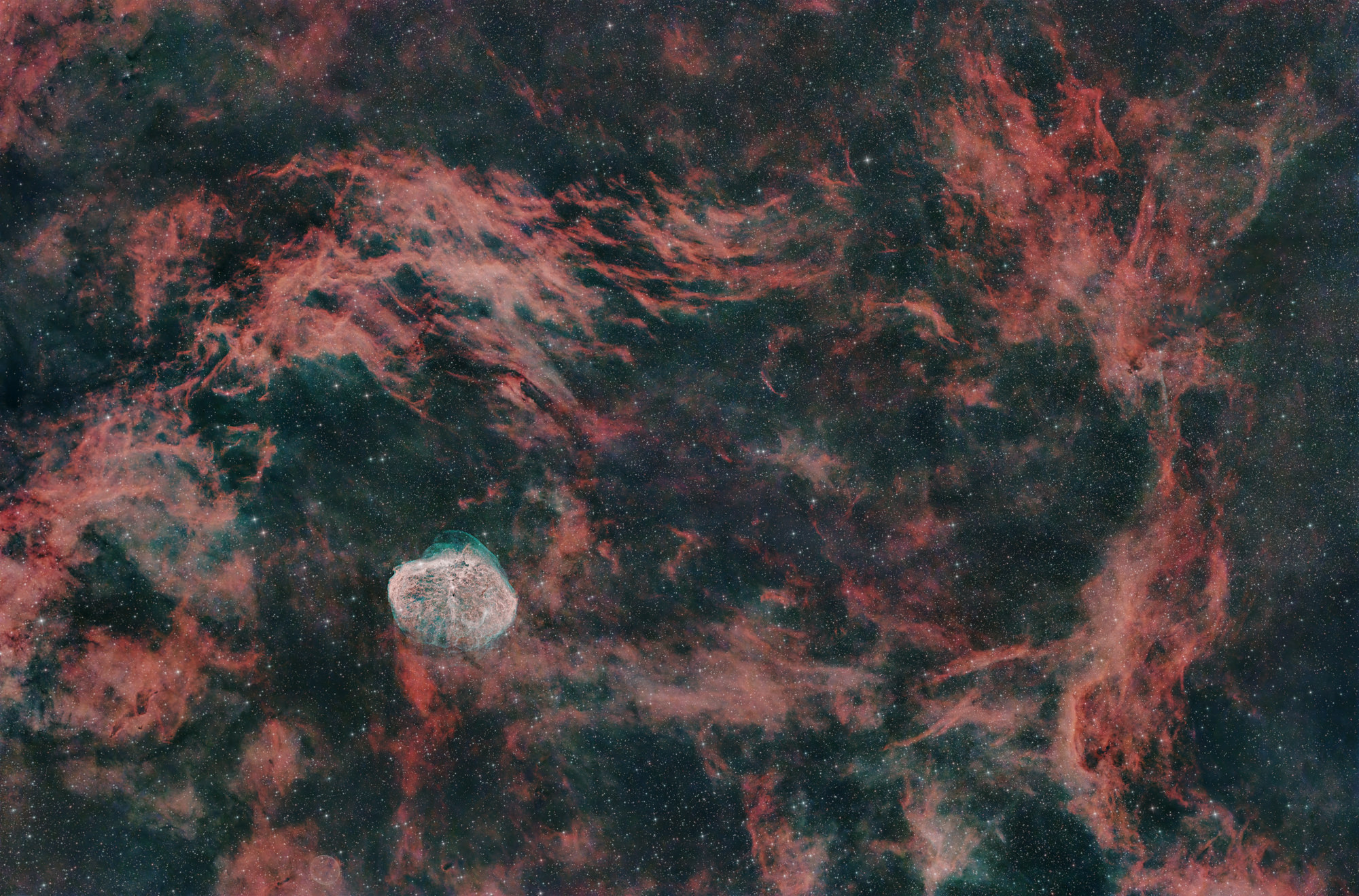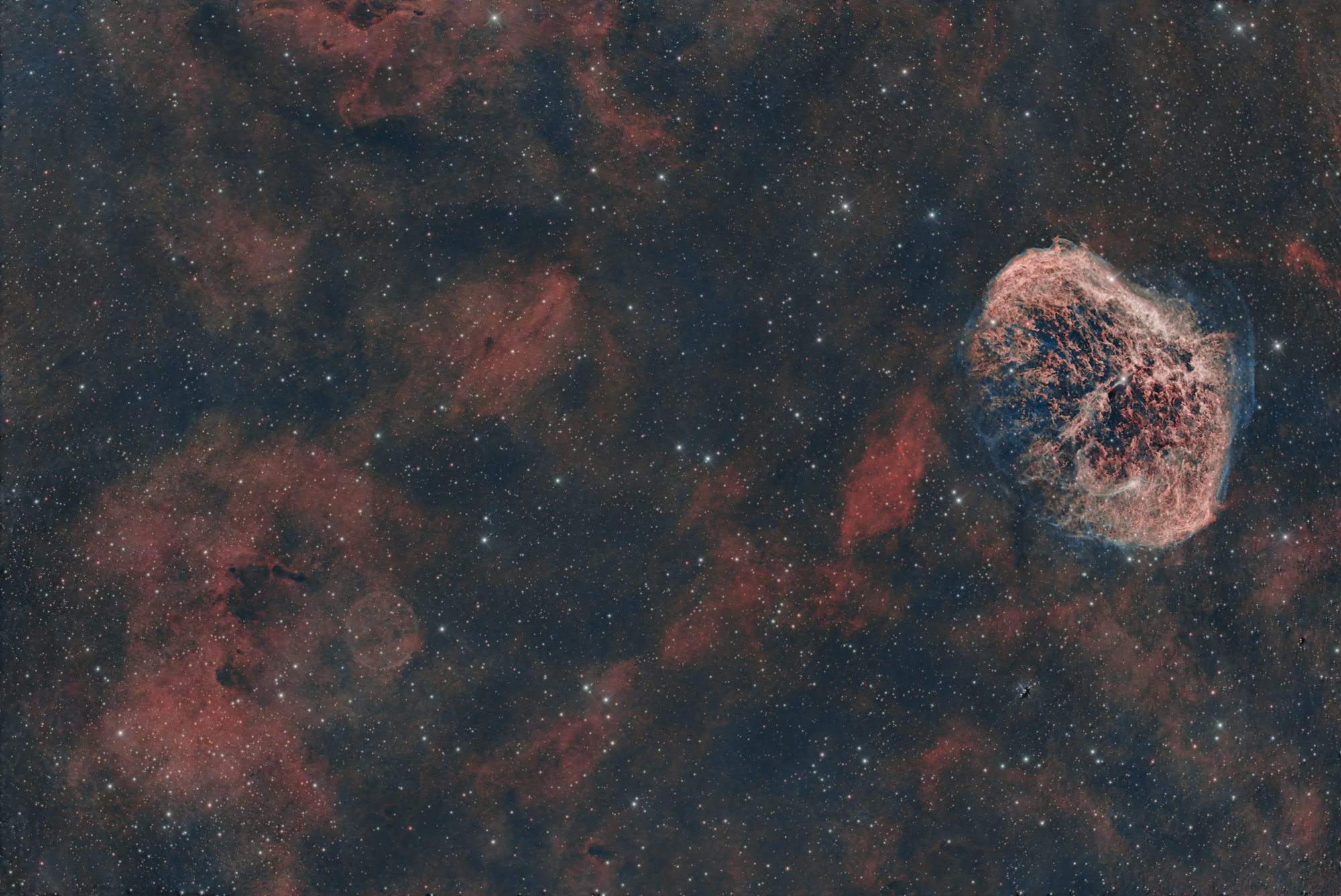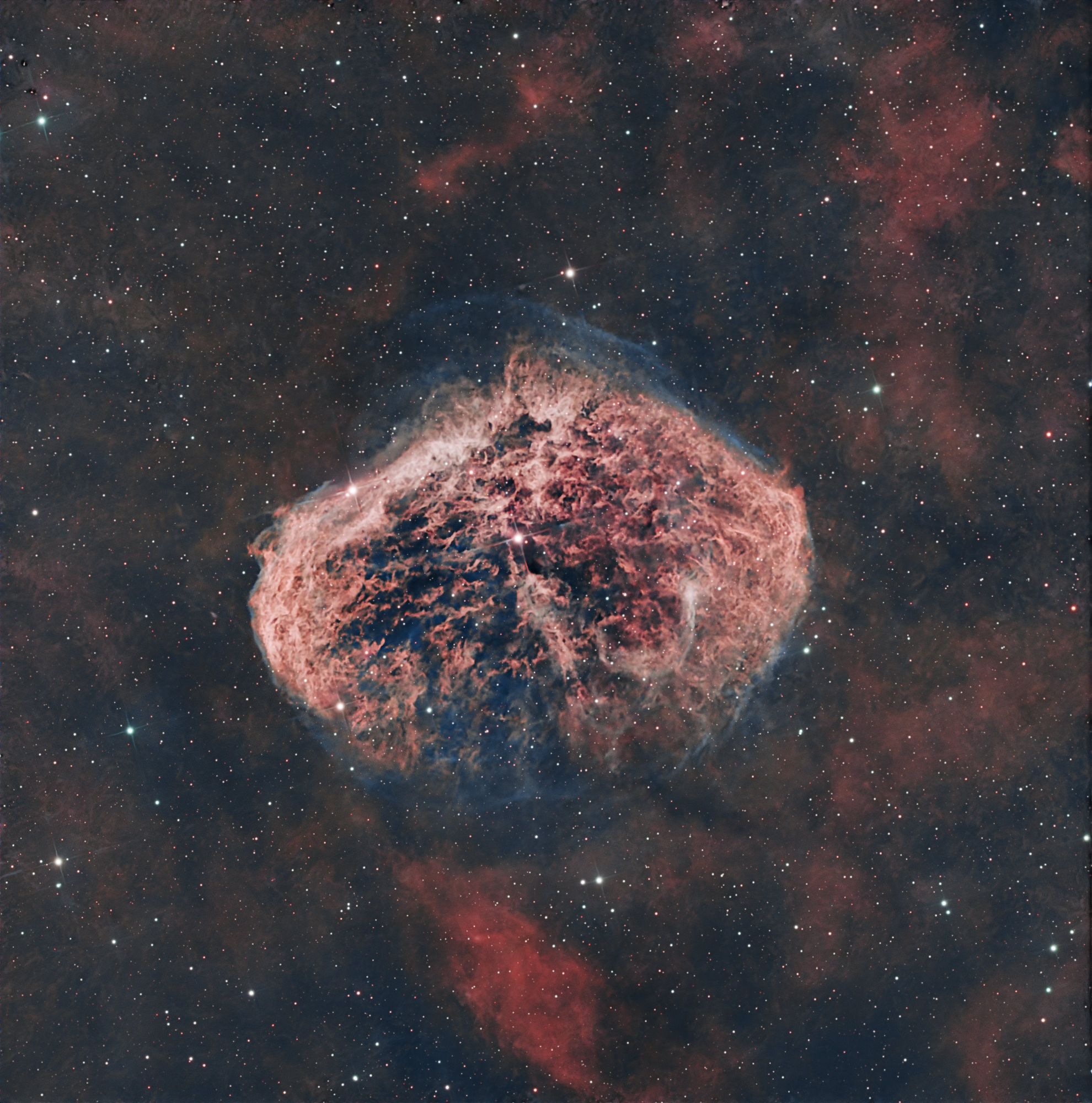Emission Nebulae
Why are astronomical nebulae colored?
The colors in astronomical images provide information about the properties and chemical composition of astronomical objects in space.
Even if astronauts could theoretically get close to deep sky objects in space, their eyes would still only see the visible part of the emitted radiation.
Telescopes, however, can collect the radiation from astronomical objects and the ionized gases from deep-sky objects. Filters in the beam path between the telescope and the camera chip separate the visible components. These are then converted into electrical signals by the camera's recording chip.
In color cameras, a color filter is already vapor-deposited onto the camera chip (Bayer sensor).
In black-and-white cameras often used for astrophotography, special astro filters are inserted into the light path using a filter wheel or filter drawer.
The camera stores these visible wavelengths (= colors) as a colored astro image on the memory card.
The colored astro image corresponds to the visible wavelengths of the ionized gases and chemical elements in space.
Why are astronomical nebulae colored?
What about the stars?
Stars also usually appear colored in astronomical images. In addition to white, they are often bluish, yellow, or even red. These color variations depend on the temperature and stage of the star's evolution.
Bluish stars
are usually very hot and young stars. They have high surface temperatures and radiate primarily in the short-wavelength blue and violet regions of the electromagnetic spectrum. These blue stars are often found in regions of active star formation.
Yellow stars
are usually somewhat older than blue stars. They have a slightly lower surface temperature and therefore appear yellowish. Yellow stars are often found in star clusters and in the galactic disk.
Red stars
are typically the oldest and coolest stars. They have low surface temperatures and radiate primarily in the long-wavelength red region of the spectrum. Red stars can occur at various stages of their evolution, including giant stars and red giants.
It is important to note that colors in astronomical images are often enhanced or manipulated to emphasize certain information or to make the image more appealing to the human eye.
The actual color of an astronomical object may be inconspicuous to the human eye or even outside the visible spectrum.
To make recorded data comparable and easier for us to interpret, coordinated color palettes, such as the Hubble Color Palette, are used.
What about the stars?
Sind die Farben echt? Link zu YouTube Video von Frank Sackenheim
Types of astronomical nebulae
Man unterscheidet folgende Arten astronomischer Nebel:
1. Emission nebula
These nebulae consist of luminous gas excited by energetic sources such as hot, young stars. The atoms in these nebulae absorb the stars' energy and re-emit it as visible light. Each atom or type of molecule has characteristic emission lines located at specific wavelengths of the electromagnetic spectrum. When these lines fall within the visible range of the spectrum, we can perceive them as specific colors. For example, hydrogen in an emission nebula often appears red, while oxygen may appear green or blue.
2. Reflexionsnebel
Diese Nebel bestehen aus Staubpartikeln, die das Licht benachbarter Sterne reflektieren. Die Farbe eines Reflexionsnebels hängt von der Zusammensetzung und Größe der Staubpartikel ab. In der Regel erscheinen Reflexionsnebel blau, da die Staubpartikel dazu neigen, blaues Licht stärker zu streuen als Licht in anderen Farben. Ein bekanntes Beispiel für einen Reflexionsnebel ist der Plejadennebel im Sternbild Stier.
3. Dunkelnebel
Diese Nebel bestehen aus dichtem interstellarem Staub, der das Licht dahinter liegender Sterne blockiert. Sie erscheinen dunkel oder schwarz, da sie kein sichtbares Licht durchlassen. Diese Nebel können jedoch indirekt durch das Licht von umgebenden Sternen oder Emissionsnebeln beleuchtet werden, wodurch sie als kontrastreiche Strukturen vor dem hellen Hintergrund erscheinen.
3. Planetary nebulae
Planetary nebulae are astronomical nebulae consisting of a shell of gas and plasma that was ejected by old stars at the end of their evolution, e.g. Owl Nebula Messier 97
4. Molecular cloud
Molecular clouds are interstellar gas clouds whose size, density, and temperature allow the formation of molecules. Very dense and cold molecular clouds are known as dark nebulae (see above). They are the birthplaces of stars.
More than half of the (baryonic) mass of the Milky Way is contained in the molecular clouds.
Types of astronomical nebulae
Link to Wikipedia: Bayer Matrix / Bayer Filter
Link to Hubble Space Telescope site
Link to Wikipedia: Emission Nebula

